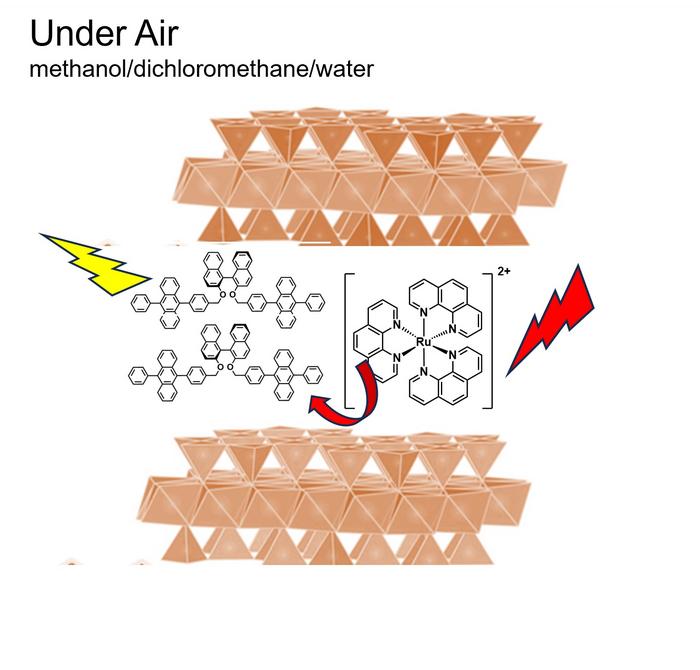The purposes of the present work are: (i) to achieve the up-conversion of photon energy in the presence of colloidal clay; (ii) to introduce molecular recognition in up-conversion to be utilized for molecular chiral sensing.

Credit: Hisako Sato
The purposes of the present work are: (i) to achieve the up-conversion of photon energy in the presence of colloidal clay; (ii) to introduce molecular recognition in up-conversion to be utilized for molecular chiral sensing.
The up-conversion (UC) of photon energy was attempted for a system of colloidal clay dispersion through the mechanism of triplet-triplet annihilation (TTA). Tris(1,10-phenanthroline)ruthenium(II) ([Ru(phen)3]2+) and 9, 10-diphenylanthracne (DPA) were used as donor and acceptor, respectively. A clay mineral used was synthetic saponite. The medium was 1:1:0.1 (v/v) methanol/dichloromethane/water. D-[Ru(phen)3]2+ was adsorbed by SAP to 26 % CEC (cation exchange capacity). The dispersion was irradiated by a laser light (0.5 mW) at 450 nm in the presence of DPA. The emission, which peaked around 430 nm, was observed under air. This indicates that the Ru(II) complex adsorbed by colloidal clay acted as a donor to achieve UC. Stereoselectivity was observed when a chiral donor/acceptor pair was employed. The results implied that the fixation of a donor molecule on a clay surface resulted in enhancing chiral selectivity during the courses of donor/acceptor energy transfer and/or TTA of excited acceptors. The results open up the possibility of developing chiral sensing on the basis of the up-conversion of colloidal clay systems.
Journal
Applied Clay Science
DOI
10.1016/j.clay.2024.107397




